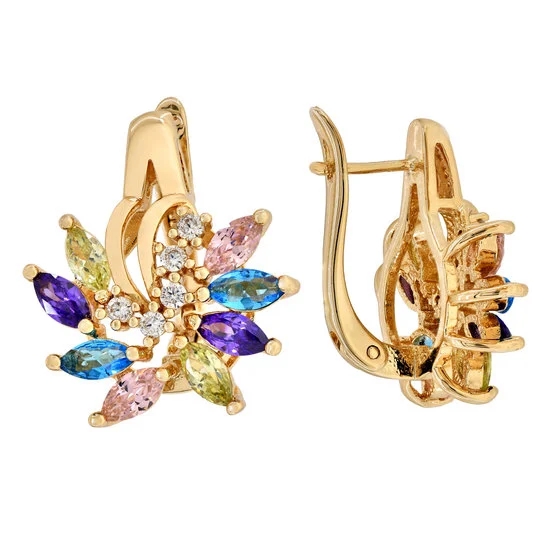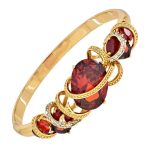Beads have been an integral part of Chinese jewelry-making for centuries, showcasing not only intricate craftsmanship but also cultural symbolism. In this article, we delve into the question: what are beads made from in jewelry from China? From traditional to modern materials, Chinese bead-making has evolved over time, reflecting a blend of heritage and innovation.
The rich history of bead-making in Chinese jewelry is a testament to the country’s artistic legacy. Traditional materials such as jade, pearls, and coral have long been favored for their symbolic meanings and aesthetic appeal. These natural elements are meticulously crafted into beads that adorn necklaces, bracelets, and other pieces of jewelry, each telling a story of craftsmanship passed down through generations.
In recent years, modern innovations in bead materials have brought new dimensions to Chinese jewelry design. From crystal and glass to ceramic and metal beads, contemporary artisans are reimagining traditional techniques with a fresh perspective. This fusion of old and new not only expands the creative possibilities but also reflects the dynamic cultural landscape of China today.
Traditional Materials Used in Chinese Bead-Making
The tradition of bead-making in Chinese jewelry dates back thousands of years, showcasing the rich history and cultural significance of these intricate accessories. Traditional materials have played a vital role in the artistry of Chinese bead-making, with each material carrying its own symbolism and meaning.
Some of the most commonly used traditional materials in Chinese bead-making include:
- Jade: Jade beads are highly prized in Chinese culture for their beauty and believed spiritual properties. Traditionally, jade symbolizes purity, grace, and wisdom.
- Coral: Coral beads are known for their vibrant colors and have been used in Chinese jewelry for centuries. In Chinese culture, coral is associated with good luck and protection.
- Pearls: Pearls have been treasured in China since ancient times and are often used as beads in jewelry pieces. Pearls symbolize purity, wealth, and femininity in Chinese culture.
These traditional materials not only enhance the aesthetics of Chinese jewelry but also carry deep cultural meanings that reflect the values and beliefs of the wearers. Incorporating these materials into bead-making showcases the craftsmanship and attention to detail that characterize Chinese jewelry design.
Beads made from these traditional materials exemplify the exquisite craftsmanship found in Chinese jewelry, making them highly sought-after by collectors and enthusiasts alike. The use of jade, coral, pearls, and other traditional materials continues to showcase the enduring beauty and cultural heritage embedded within each piece of Chinese jewelry adorned with beads.
Modern Innovations in Bead Materials in Chinese Jewelry
In recent years, the world of jewelry-making has seen a surge in modern innovations when it comes to bead materials used in Chinese jewelry. While traditional materials like jade, pearls, and coral have long been staples in Chinese bead-making, contemporary designers are incorporating new and exciting materials to create unique and avant-garde pieces. These innovative materials not only diversify the options available to jewelry artisans but also offer consumers a fresh perspective on traditional Chinese designs.
Some of the modern materials making their mark in Chinese bead-making include:
- Crystal beads
- Resin beads
- Acrylic beads
These new additions bring a touch of glamour and versatility to Chinese jewelry, allowing for a wider range of styles and aesthetics. Crystal beads, in particular, have gained popularity for their sparkle and elegance, adding a luxurious look to any piece. On the other hand, resin and acrylic beads provide designers with an opportunity to experiment with bold colors and shapes, resulting in contemporary designs that appeal to a younger audience.
Moreover, incorporating these modern materials into traditional Chinese jewelry techniques creates a harmonious blend of old-world craftsmanship with contemporary flair. By pushing boundaries and embracing innovation, jewelry artisans are keeping the art of bead-making in China alive and thriving for future generations to appreciate. The combination of traditional techniques with modern materials ensures that Chinese jewelry continues to evolve while staying true to its rich cultural heritage.
Unique Cultural Significance of Beads in Chinese Jewelry Design
The use of beads in Chinese jewelry design goes beyond mere decoration; each bead carries a unique cultural significance that adds layers of meaning to the piece. Historically, beads were not only used as adornments but also as symbols of wealth, social status, and even protection.
In Chinese culture, certain types of beads were believed to ward off evil spirits or bring luck and prosperity to the wearer. For example, jade beads were highly prized for their association with purity, beauty, and good fortune.
When exploring the question “What are beads made from in jewelry from China,” it is essential to consider the cultural context in which these materials are chosen. Traditional materials such as jade, ivory, bone, and wood have been historically used in Chinese bead-making due to their availability and symbolic meanings.
These materials were not only selected for their aesthetic qualities but also for their connections to ancient beliefs and traditions. Today, artisans continue to honor these traditions while also incorporating modern materials like glass, crystal, and metal into their designs.
One cannot overlook the intricate craftsmanship and attention to detail that goes into creating beads for Chinese jewelry. Artisans employ a variety of techniques such as carving, molding, painting, and threading to transform raw materials into beautiful beads that convey stories and symbolism.
Each bead is a testament to the skill and creativity of the maker, reflecting centuries-old techniques passed down through generations. The process of bead-making is not merely a technical skill but an art form that showcases the rich cultural heritage of China.
| Cultural Significance | Bead Materials |
|---|---|
| Good fortune | Jade |
| Protection | Bone |
| Symbol of wealth | Ivory |
Techniques Used in Creating Beads for Chinese Jewelry
Bead-making in Chinese jewelry has a long and storied history, with techniques that have been passed down through generations. The process of creating beads for Chinese jewelry involves intricate craftsmanship and attention to detail. One of the traditional techniques used in bead-making is known as “cloisonné,” where wires are bent to create compartments that are then filled with enamel. This results in vibrant and colorful beads that are often seen in traditional Chinese jewelry pieces.
Another technique commonly used in creating beads for Chinese jewelry is carving. Skilled artisans carve materials such as jade, bone, or wood into intricate designs to make unique and visually stunning beads. The art of carving beads requires precision and artistry, resulting in pieces that are highly coveted for their beauty and craftsmanship.
In addition to traditional techniques, modern innovations have also influenced the creation of beads for Chinese jewelry. With advancements in technology and materials, contemporary jewelers in China now have access to a wide range of options for creating beads, including glass, crystal, and synthetic materials. These modern innovations provide new opportunities for creativity and innovation in Chinese jewelry design while still honoring the rich tradition of bead-making in the country.
Sustainability and Ethical Considerations in Sourcing Bead Materials From China
When it comes to sourcing bead materials for jewelry from China, there is a growing emphasis on sustainability and ethical considerations. Traditional bead-making in China often involved the use of natural materials such as jade, pearls, coral, and bone. However, with the increasing demand for beads in the global market, there has been a shift towards more sustainable practices in sourcing materials.
One of the key concerns in sourcing bead materials from China is the impact on the environment. With traditional materials becoming scarce due to over-harvesting or unsustainable extraction methods, jewelers are now turning towards alternative materials that are more sustainable. For example, recycled glass beads and wooden beads are becoming popular choices for eco-conscious consumers looking for sustainable options.
In addition to environmental considerations, ethical sourcing of bead materials is also a priority for many jewelry makers. This includes ensuring that the materials are sourced through fair trade practices, with workers being paid fair wages and working under safe conditions. By prioritizing sustainability and ethical sourcing practices, jewelry makers can not only create beautiful pieces but also support responsible production methods in the industry.
| Sustainable Bead Materials | Ethical Sourcing Practices |
|---|---|
| Recycled glass beads | Fair trade agreements |
| Wooden beads | Safe working conditions |
Popular Types of Beads Used in Chinese Jewelry
When it comes to Chinese jewelry, a wide variety of beads are used in creating intricate and beautiful designs. These beads are made from a range of materials, each with its own unique characteristics and cultural significance. Some popular types of beads used in Chinese jewelry include jade beads, cloisonné beads, and cinnabar beads.
Jade Beads
Jade has been highly valued in Chinese culture for centuries, symbolizing purity, grace, and beauty. Jade beads are often incorporated into traditional Chinese jewelry designs, adding a touch of elegance and sophistication. In China, jade is believed to bring good luck and protection to the wearer, making jade beads a popular choice for both everyday wear and special occasions.
Cloisonné Beads
Cloisonné is a traditional technique used to create colorful enamel designs on metal surfaces. Cloisonné beads are meticulously crafted using this technique, resulting in vibrant and detailed patterns that are often seen in Chinese jewelry pieces. These beads add a pop of color and intricacy to any design, reflecting the rich artistic heritage of Chinese craftsmanship.
Cinnabar Beads
Cinnabar is a red mineral that has been used in Chinese jewelry-making for centuries. Cinnabar beads are known for their deep red color and intricate carvings, adding a touch of drama and sophistication to any piece of jewelry. In Chinese culture, cinnabar is believed to bring prosperity and positive energy to the wearer, making these beads not only beautiful but also symbolic in meaning.
How to Identify High-Quality Beads in Chinese Jewelry
Beads have played a significant role in Chinese jewelry-making traditions for centuries, with artisans utilizing a wide range of materials to create intricate and beautiful pieces. When it comes to identifying high-quality beads in Chinese jewelry, there are certain characteristics to look out for that can help determine the craftsmanship and authenticity of these pieces.
One key factor to consider is the material from which the beads are made. Traditional materials used in Chinese bead-making include jade, pearls, coral, and various types of gemstones like turquoise and agate. These natural materials not only add value to the jewelry but also reflect Chinese cultural beliefs and traditions. In modern times, artisans have also incorporated materials like glass, ceramic, and even recycled elements into their bead designs to cater to changing tastes and trends.
In addition to the material used, the quality of craftsmanship is another important aspect to consider when evaluating beads in Chinese jewelry. Look for uniformity in size, shape, color, and texture across all beads in a piece. High-quality beads will be well-polished with no visible flaws or imperfections. The way in which the beads are strung together can also indicate superior craftsmanship – a securely knotted strand with consistent spacing between each bead demonstrates attention to detail and durability.
Furthermore, paying attention to the provenance of the beads can also help identify high-quality pieces. Beads sourced from reputable suppliers who adhere to ethical practices ensure that you are investing in jewelry that has been responsibly produced. By understanding these key characteristics and factors when assessing beads in Chinese jewelry, enthusiasts can appreciate the artistry and skill involved in creating these timeless adornments that continue to captivate collectors around the world.
Conclusion
In conclusion, the art of bead-making in Chinese jewelry holds a significant place in the rich cultural heritage of China. From traditional materials like jade and pearls to modern innovations such as crystal and glass, the variety of materials used in Chinese bead-making reflects the creativity and craftsmanship of Chinese artisans throughout history.
The unique cultural significance of beads in Chinese jewelry design adds layers of meaning to each piece, making them not just accessories but also symbols of tradition and heritage.
As techniques evolve and new materials are introduced, it is important to consider sustainability and ethical practices in sourcing bead materials from China. By supporting responsible sourcing practices, we can ensure that future generations continue to enjoy the beauty of Chinese jewelry without harming the environment or exploiting communities.
Understanding the popular types of beads used in Chinese jewelry and how to identify high-quality beads is key to appreciating the intricate designs and skilled workmanship that go into each piece.
Ultimately, what sets Chinese jewelry apart is not just the materials used or the techniques employed but the enduring beauty and craftsmanship that have been passed down through generations. By honoring these traditions and celebrating the artistry of bead-making in Chinese jewelry, we can continue to appreciate this ancient craft for years to come.
Frequently Asked Questions
What Are Chinese Beads Made Of?
Chinese beads are typically made of a variety of materials such as jade, bone, wood, glass, crystal, precious metals like gold and silver, as well as semi-precious stones like turquoise and agate. Each material has its own unique properties and aesthetic appeal.
What Materials Are Used in Chinese Jewelry?
Chinese jewelry incorporates a wide range of materials including jade, pearl, coral, turquoise, Cloisonné enamel, gold, silver, bronze, brass, and various types of gemstones. These materials are often combined to create intricate designs that reflect the rich cultural heritage of China.
What Are Jewellery Beads Made Of?
Jewellery beads can be made from diverse materials such as glass, metal, plastic, ceramic, wood, stone (like turquoise or agate), shell (like mother-of-pearl), seed beads (such as seed pearls or coral seeds), and organic materials like bone or horn. These materials allow for a broad spectrum of creative possibilities in jewelry design.

Welcome to my jewelry blog! My name is Sarah and I am the owner of this blog.
I love making jewelry and sharing my creations with others.
So whether you’re someone who loves wearing jewelry yourself or simply enjoys learning about it, be sure to check out my blog for insightful posts on everything related to this exciting topic!





